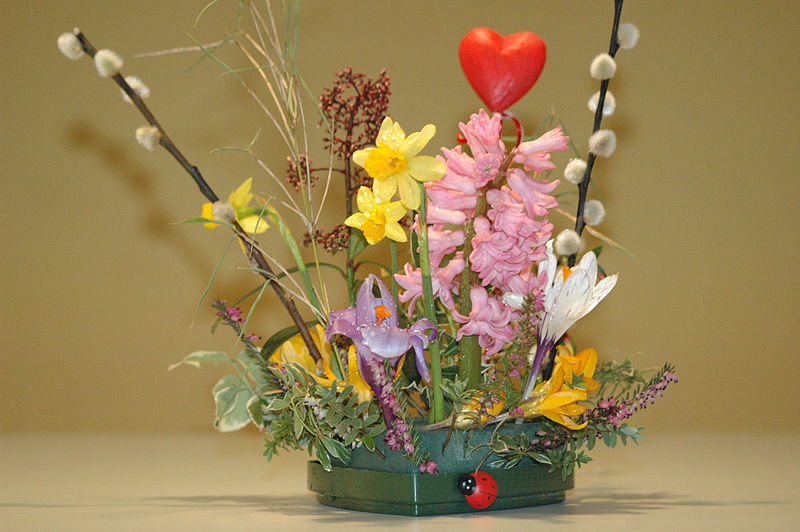Floral foam is the spongy phenolic foam used by flower arrangers to hold and hydrate flowers. The foam construction enables the material to hold flowers and greenery in place and at unusual angles to create interesting and accurate floral displays. Some forms of the material can be soaked in water before use to supply water to the plants and flowers, thus elongating their lives. The foam can be purchased in a variety of shapes with bricks and cylinders being the most common and almost any shape or form can be easily achieved by carving the foam into shape. Floral foam can also be sourced in a variety of colours to suit the design of various displays.
Floral foam is lightweight, flexible and inexpensive and enables the construction of stable, elaborate arrangements. It is used by florists and hobbyists across the globe and there is no other material which affords such ease of use. Despite its obvious benefits, care must be taken when using floral foam as this plastic based material can prove hazardous to both the people who use it and the environment.
The Material
Floral foam is a plastic material which contains some toxic elements including formaldehyde, barium sulphate, heptane and carbon black. Contact with the material can cause skin and eye irritation and problems with the respiratory tract. It is, therefore, beneficial to handle floral foam whilst wearing non-permeable gloves. The dust from the foam can also be problematic when inhaled or contacting the eyes and exposure to heptane can result in severe lung damage and so users should wear a protective mask and safety glasses especially if carving the material into shape. When the foam is soaked in water formaldehyde can be released and so care must be taken when contacting the water too. As some of the elements in floral foam are known to be carcinogenic prolonged exposure should be avoided but casual use should be safe whilst wearing a mask and gloves.
The Environment
The toxins in floral foam can be hazardous to the environment as well as to the people who use it. If the material becomes heated the de-gassing of formaldehyde into the air will occur and so floral foam should be stored in a cool, dry place. Floral arrangements should be exposed to as little heat as possible and kept out of direct sunlight. You should also never attempt to dispose of the material by burning it. As a plastic, floral foam should be submitted for recycling and not placed in your domestic waste where it will end up in landfill and pollute the ground. Any water used to soak the foam should also be disposed of carefully.
Useful
Floral foam is an incredibly useful innovation which has been used by florists since its invention in 1954. Whilst it is perfectly safe to work with occasionally, it is always advisable to wear protection whilst using the foam and as the long term effect of continued exposure is unknown, regular users should take extra care when handling the material.
Byline
Article by Sally Stacey

